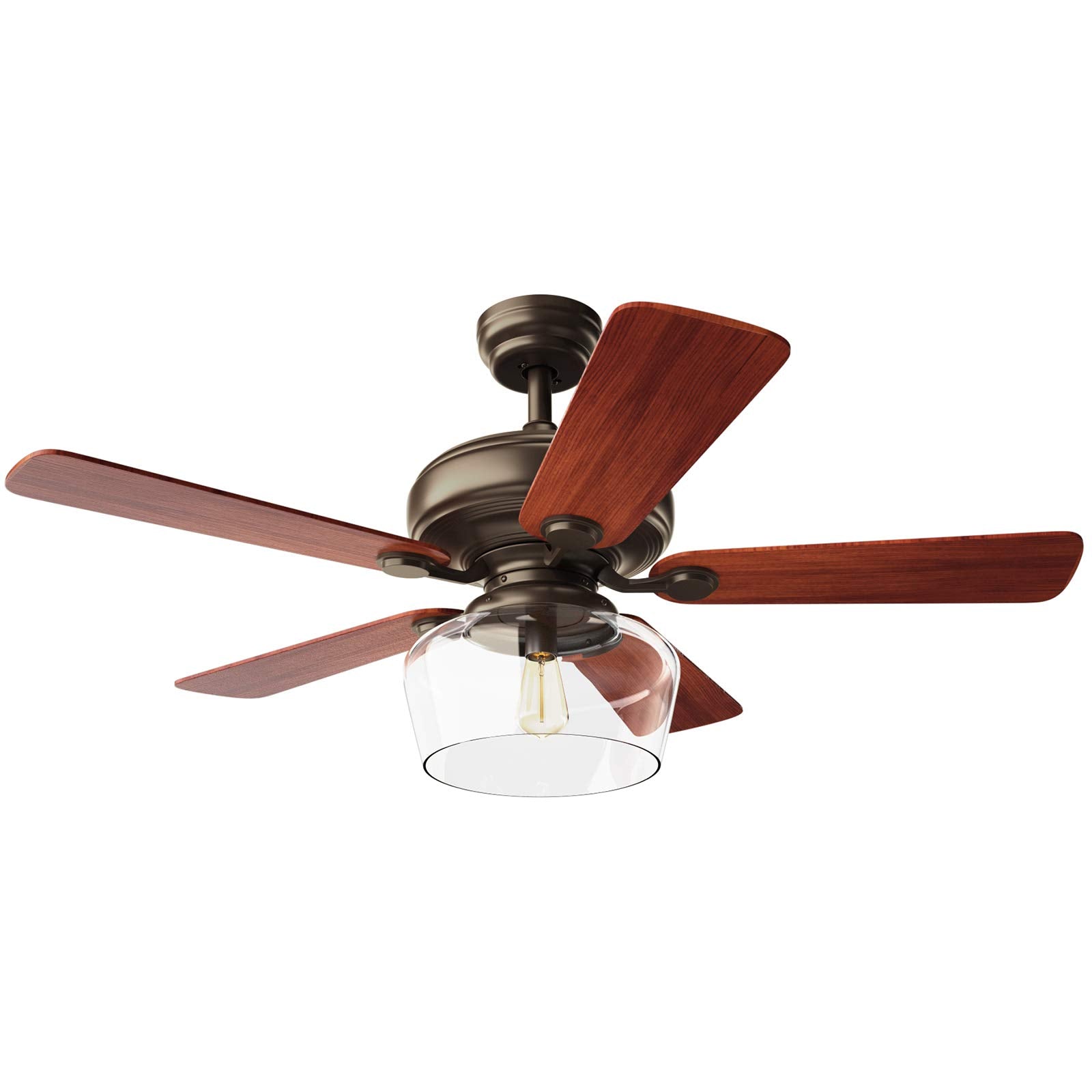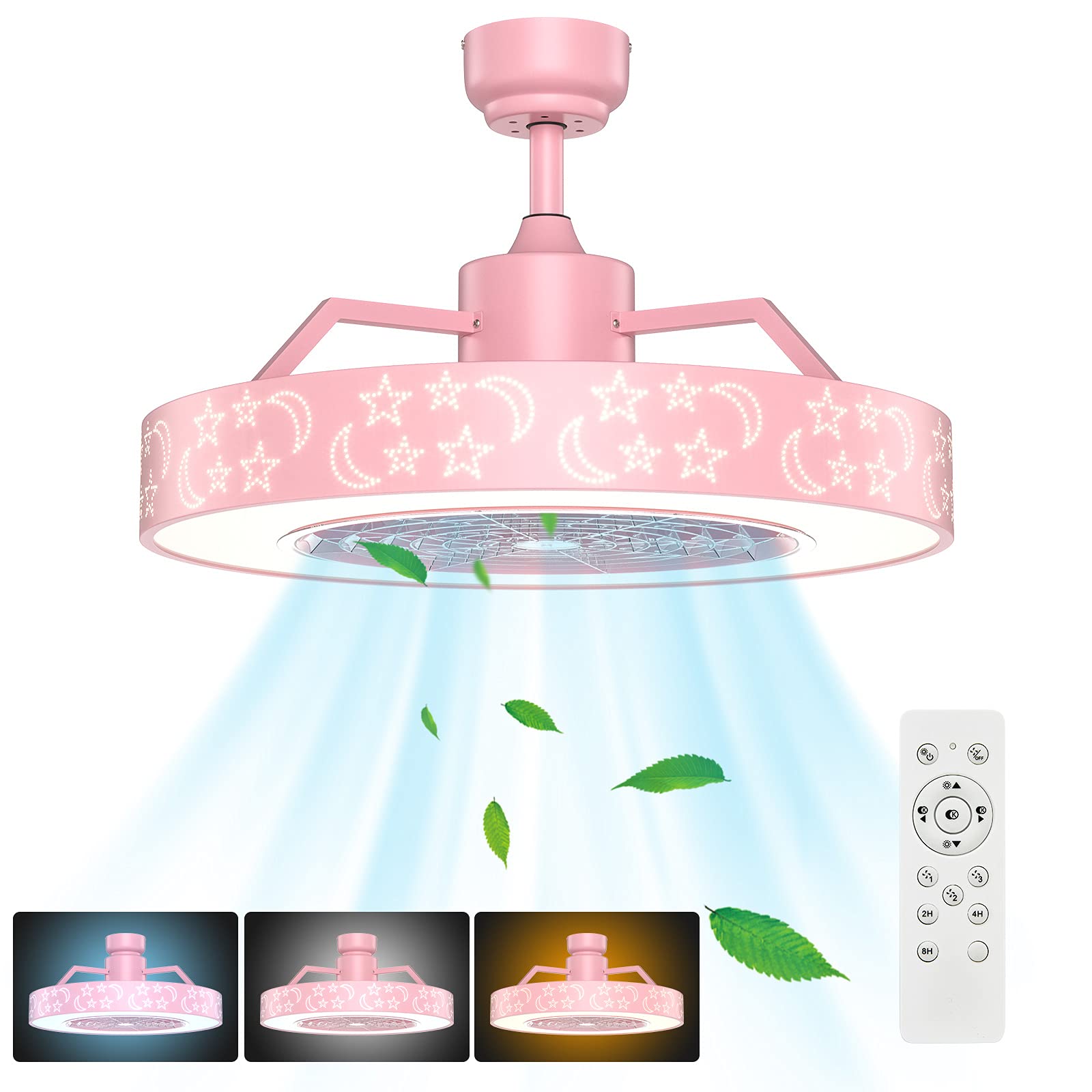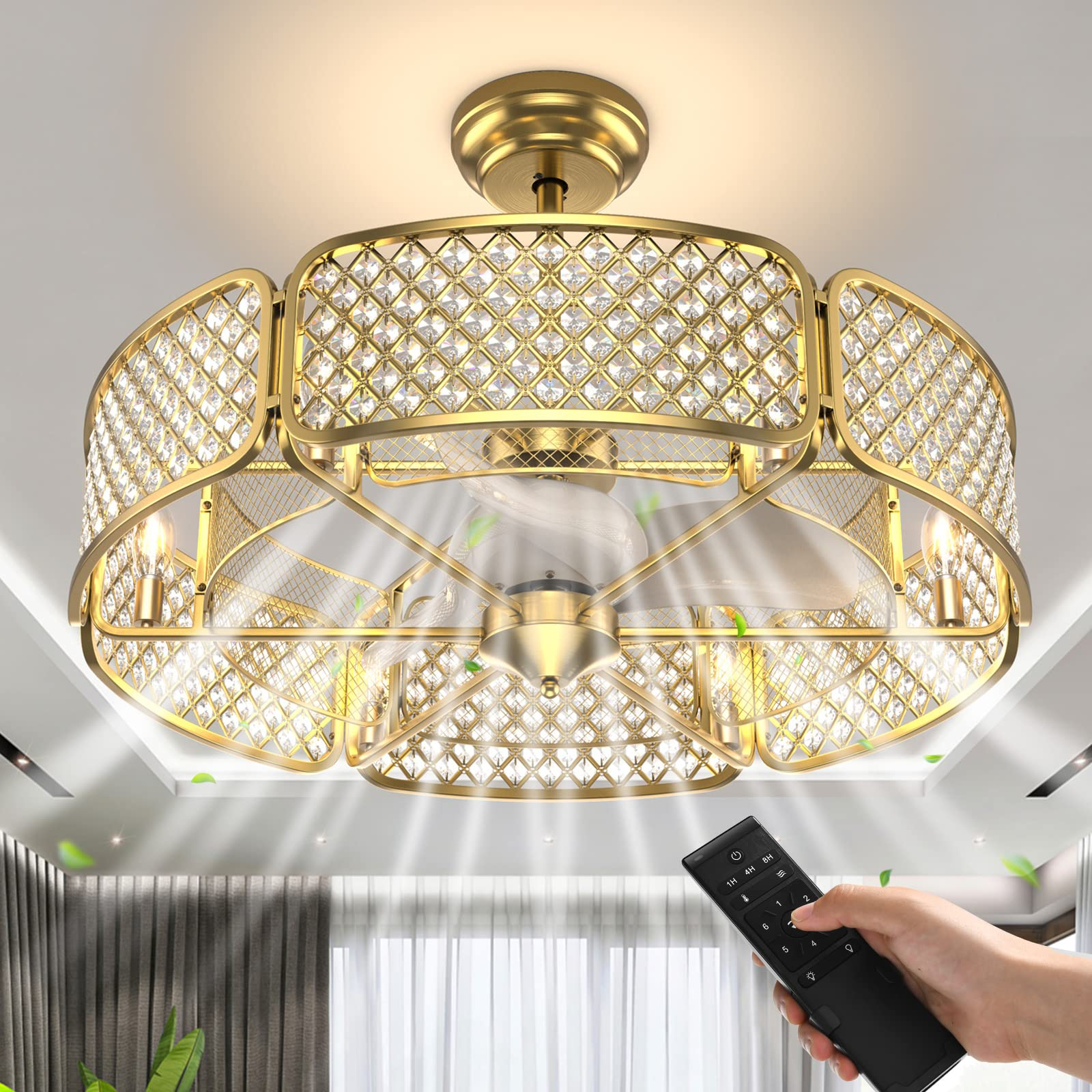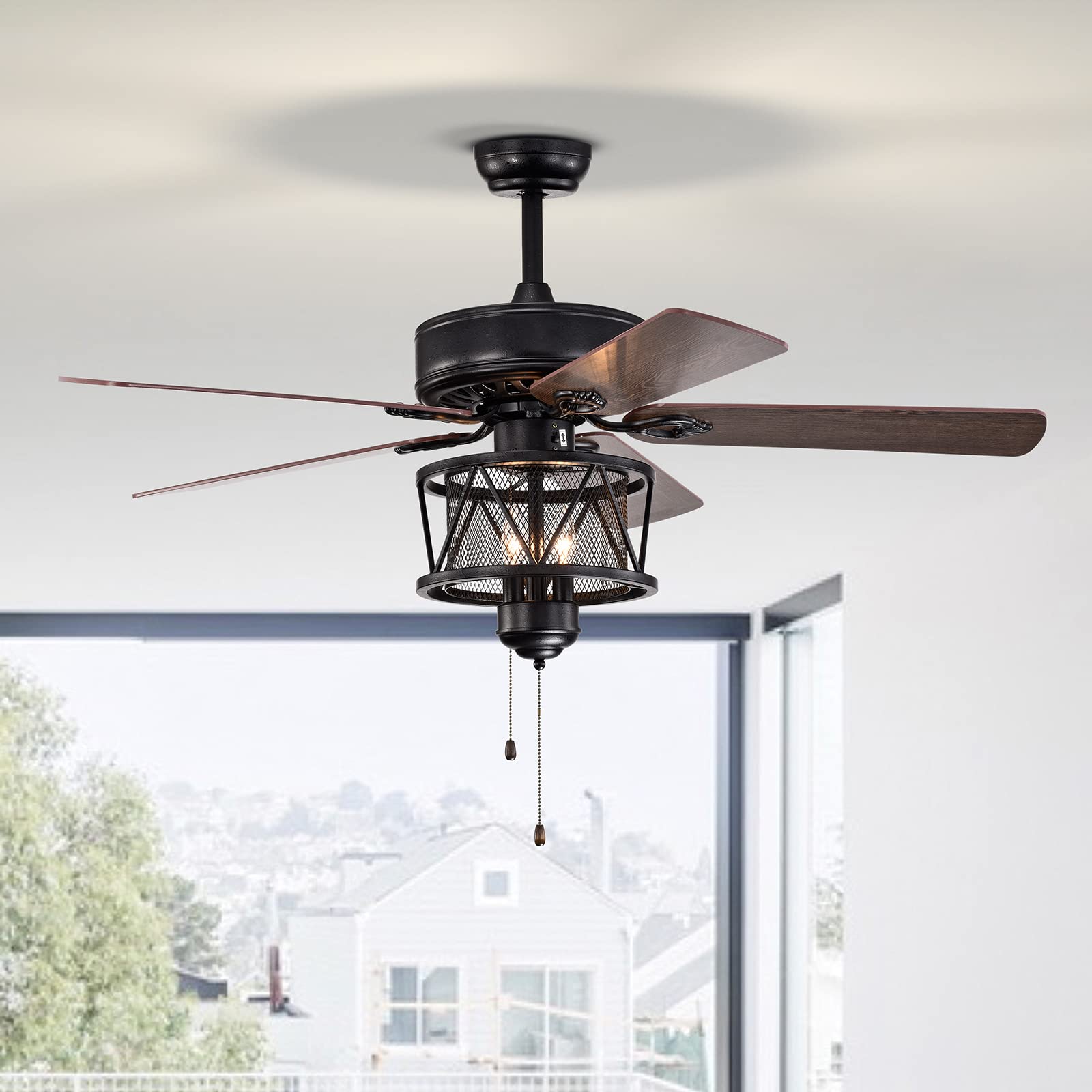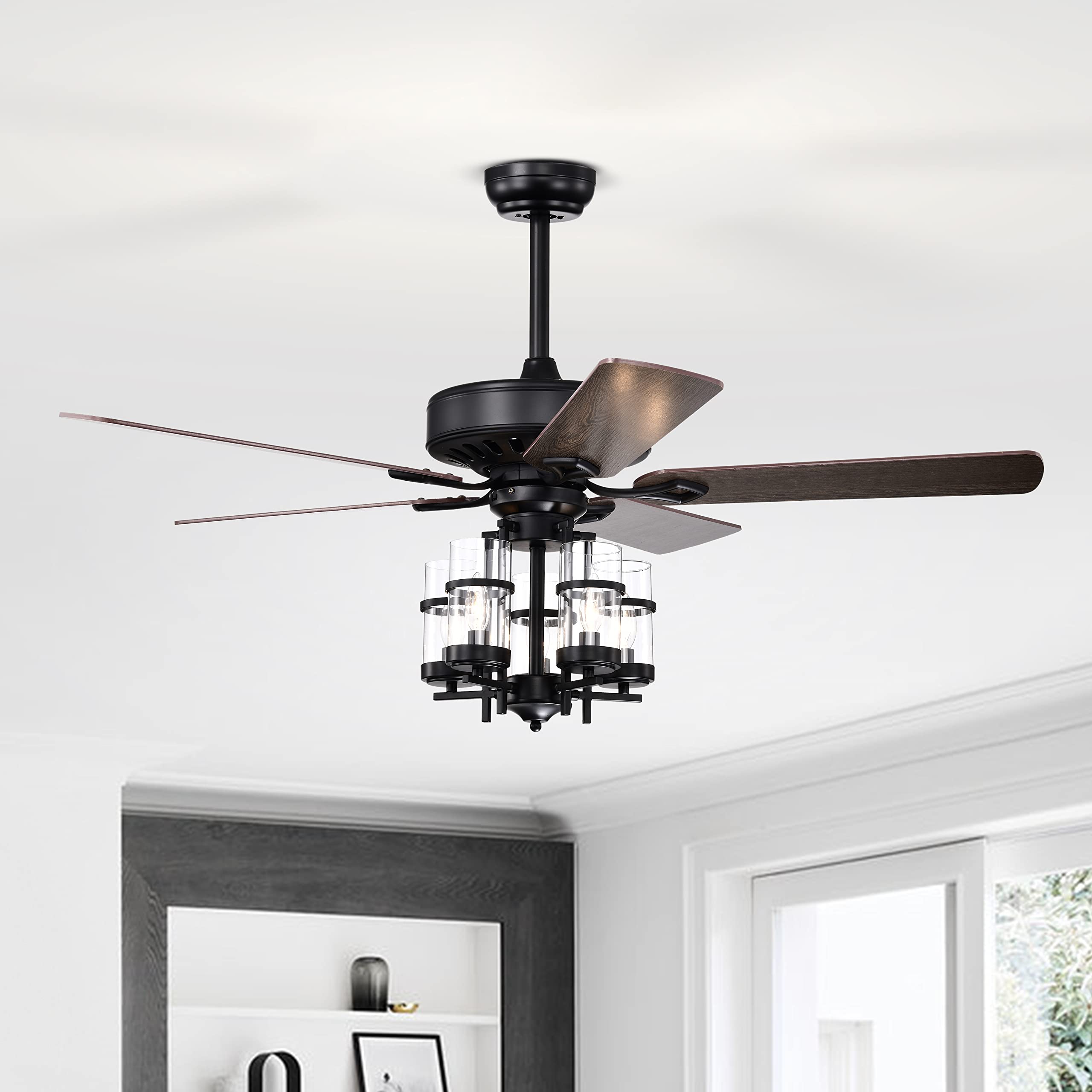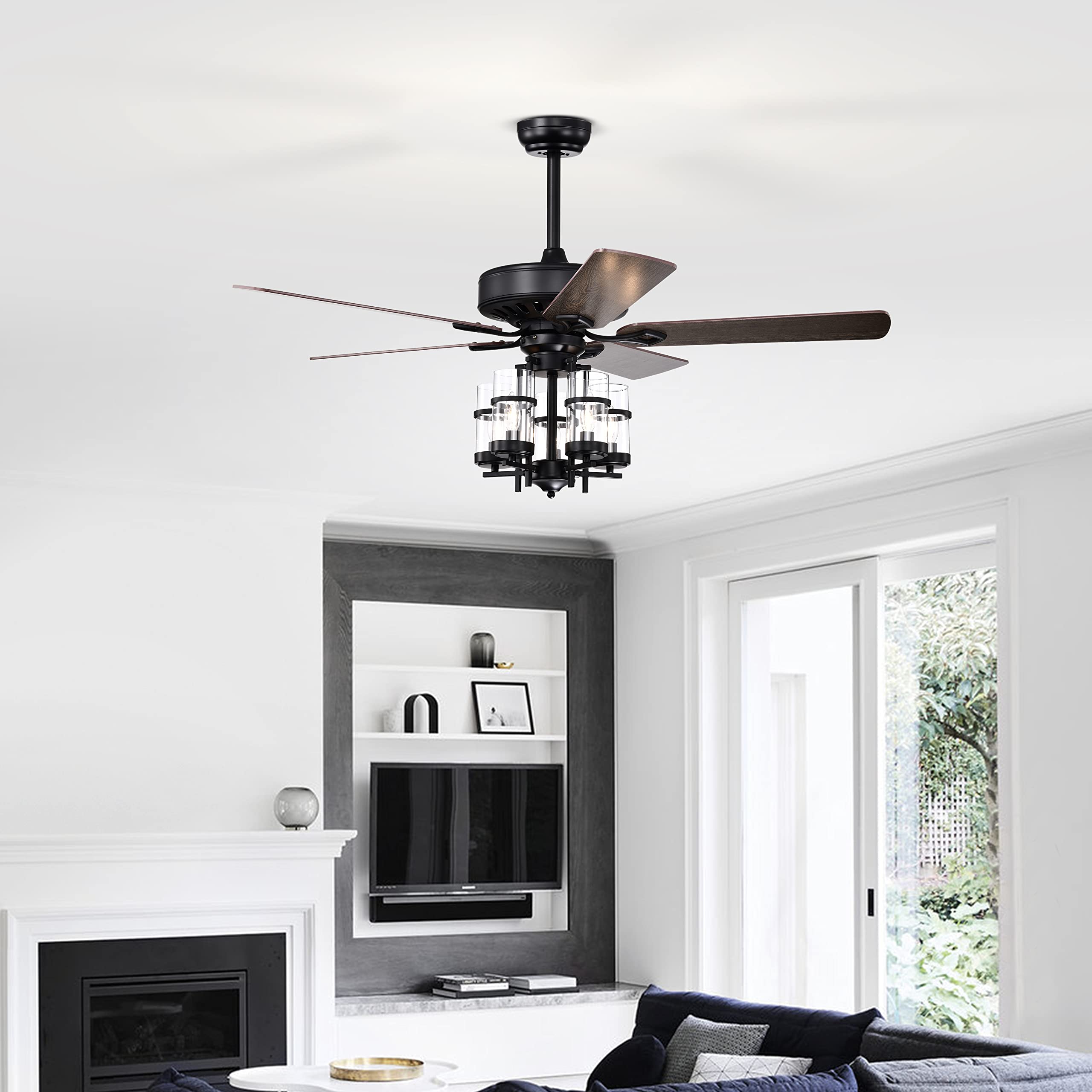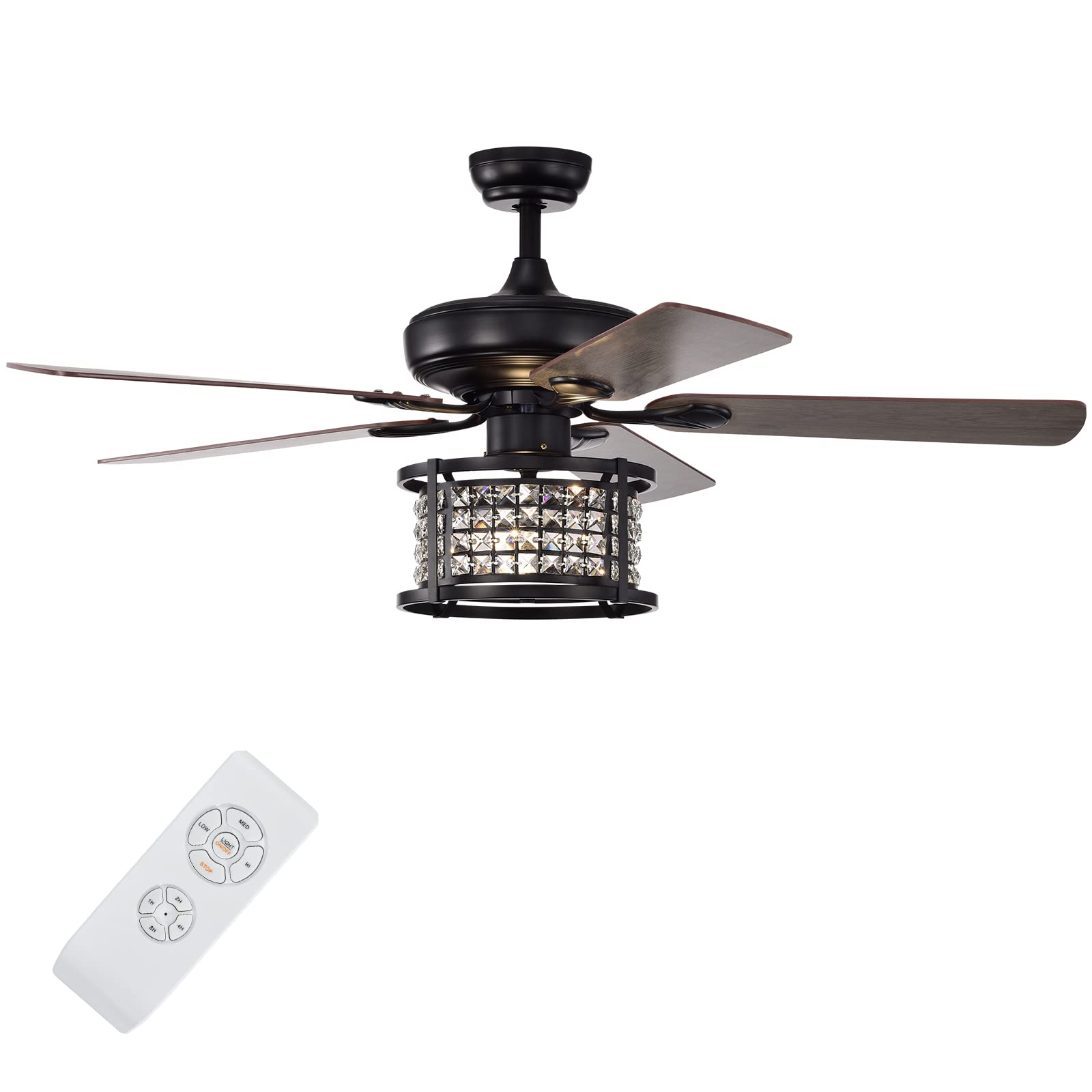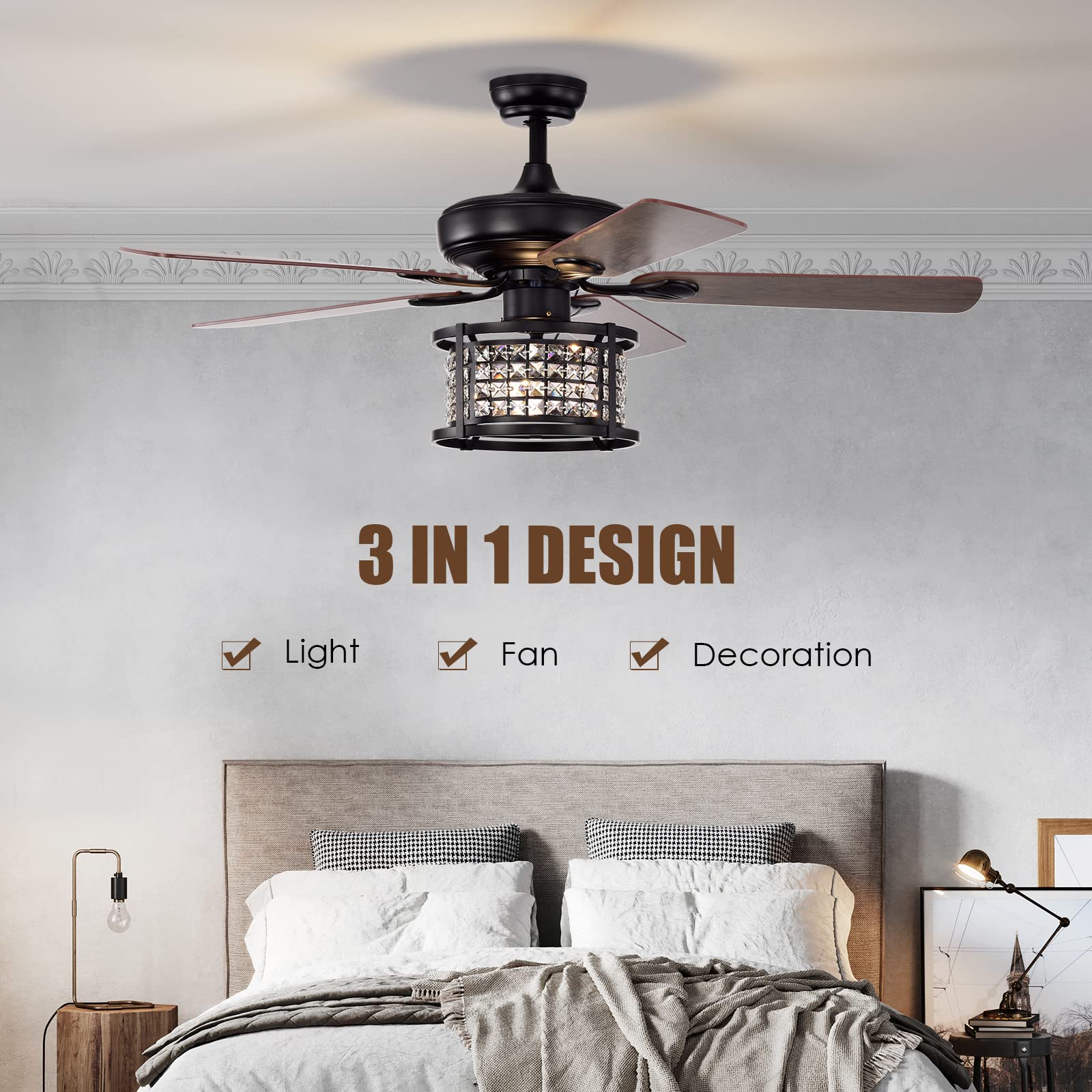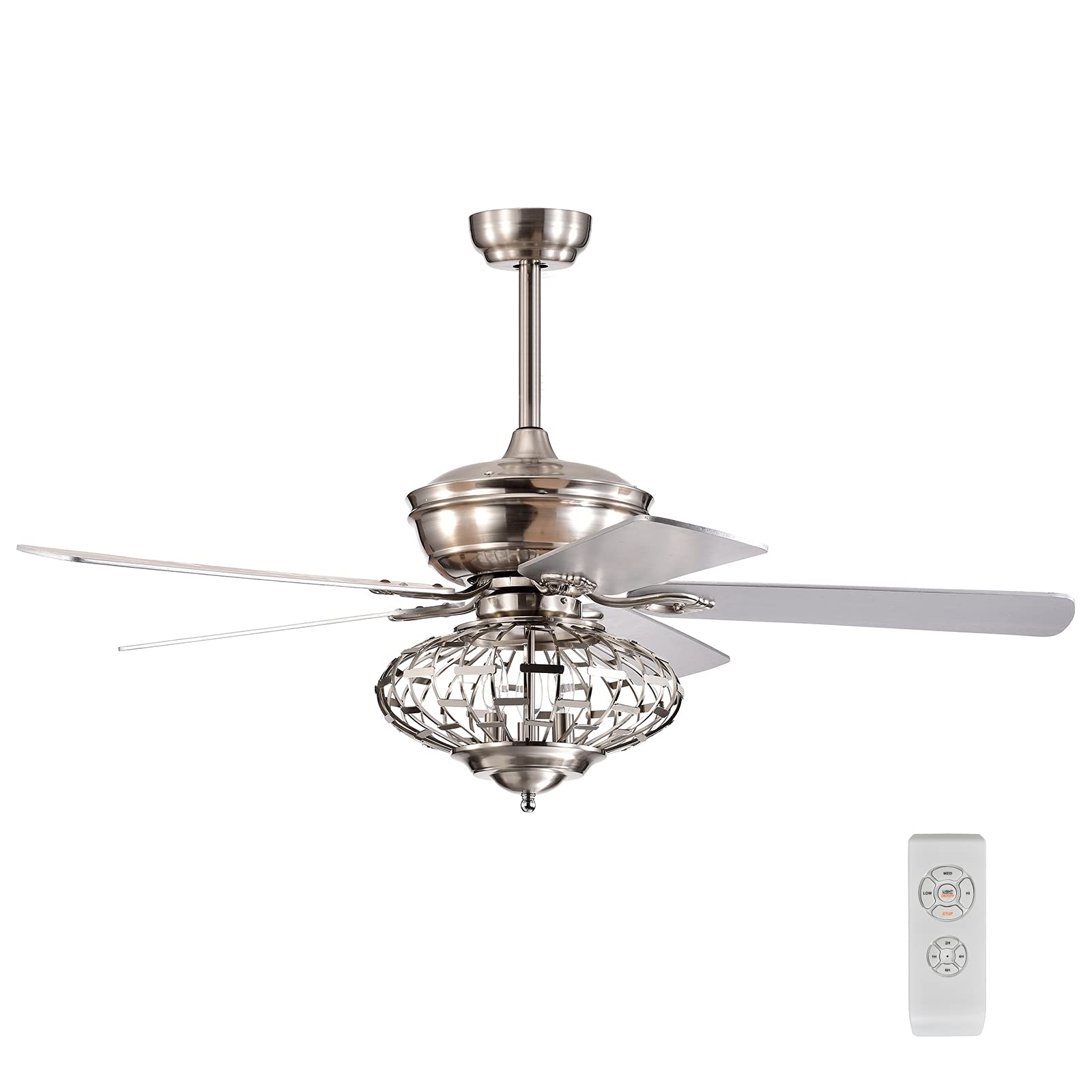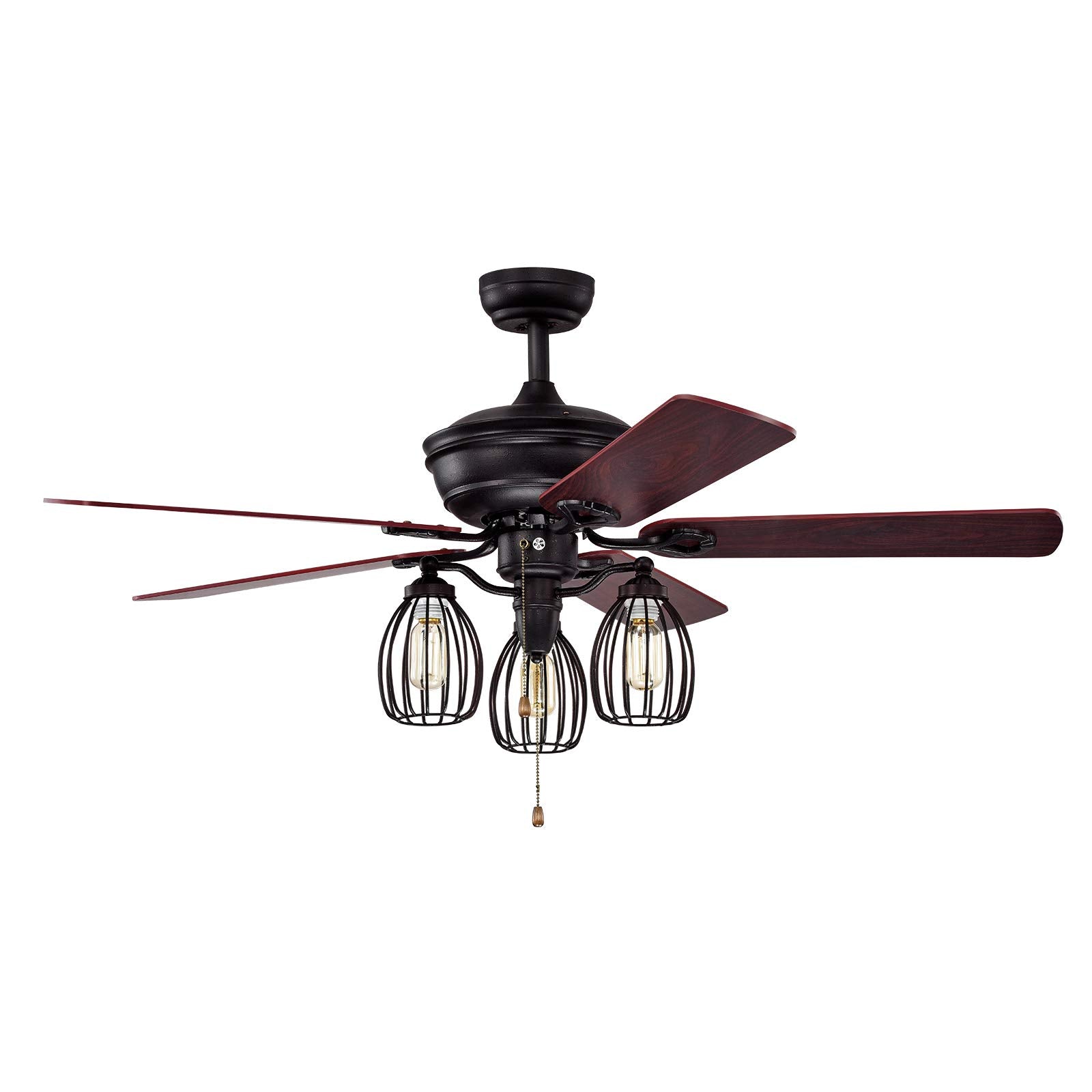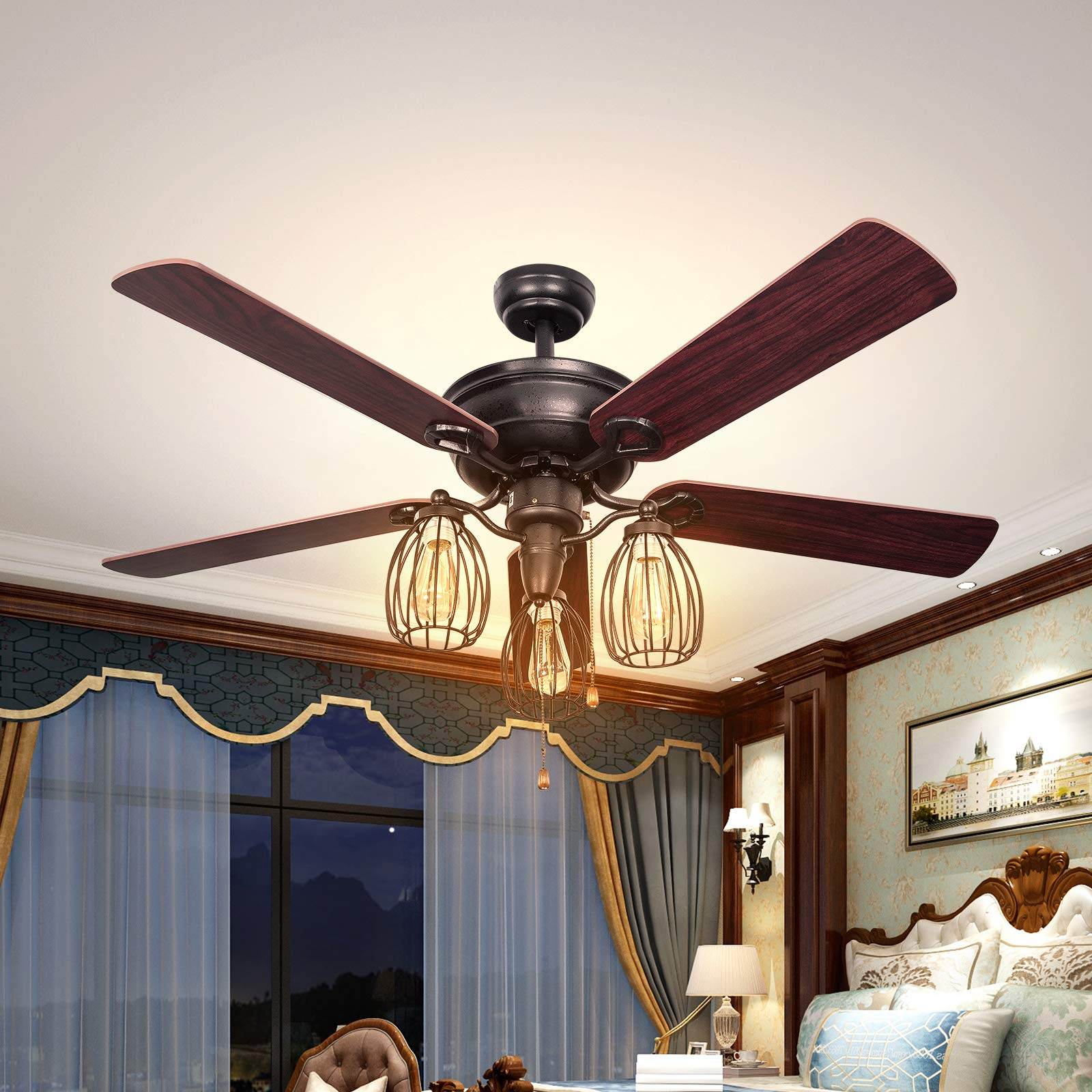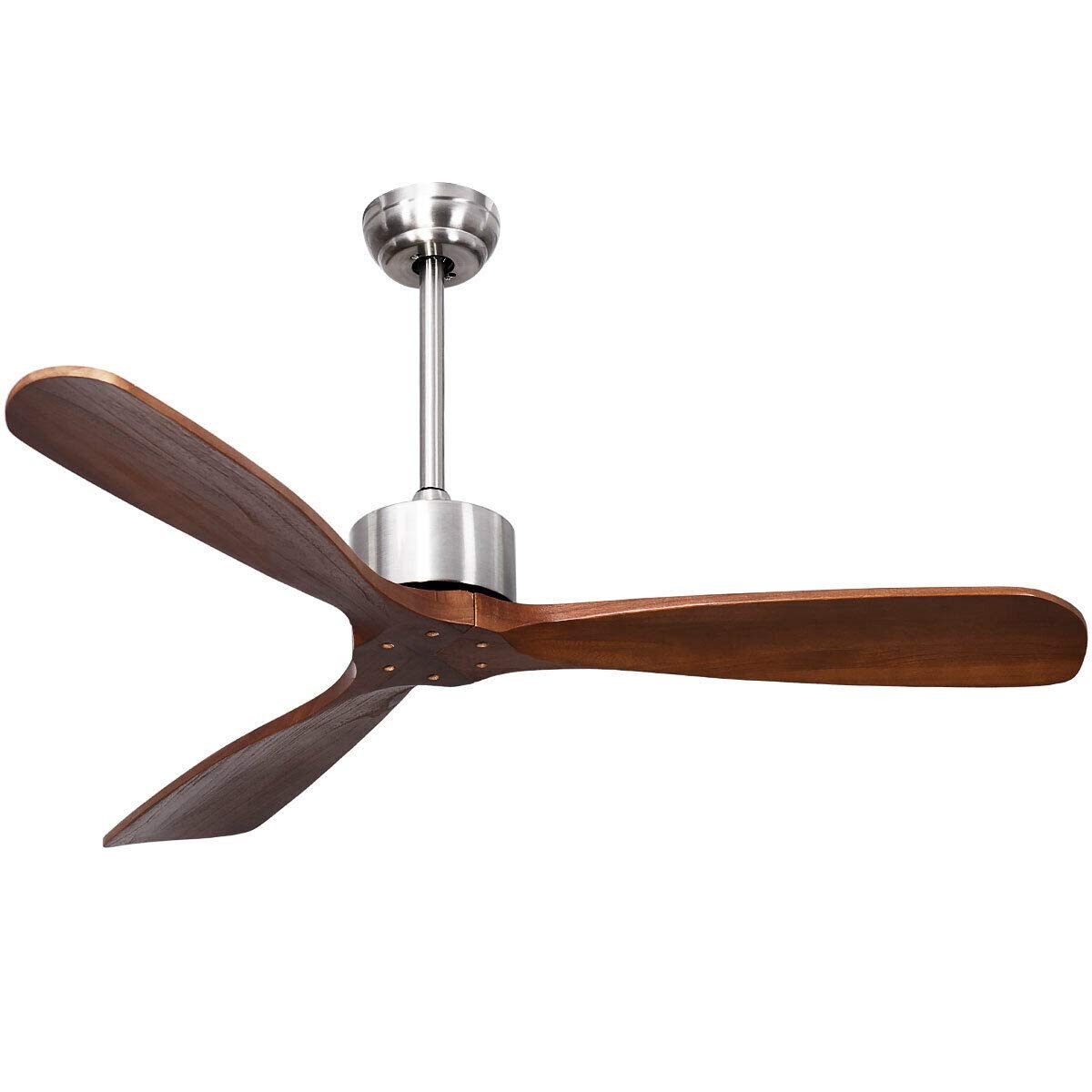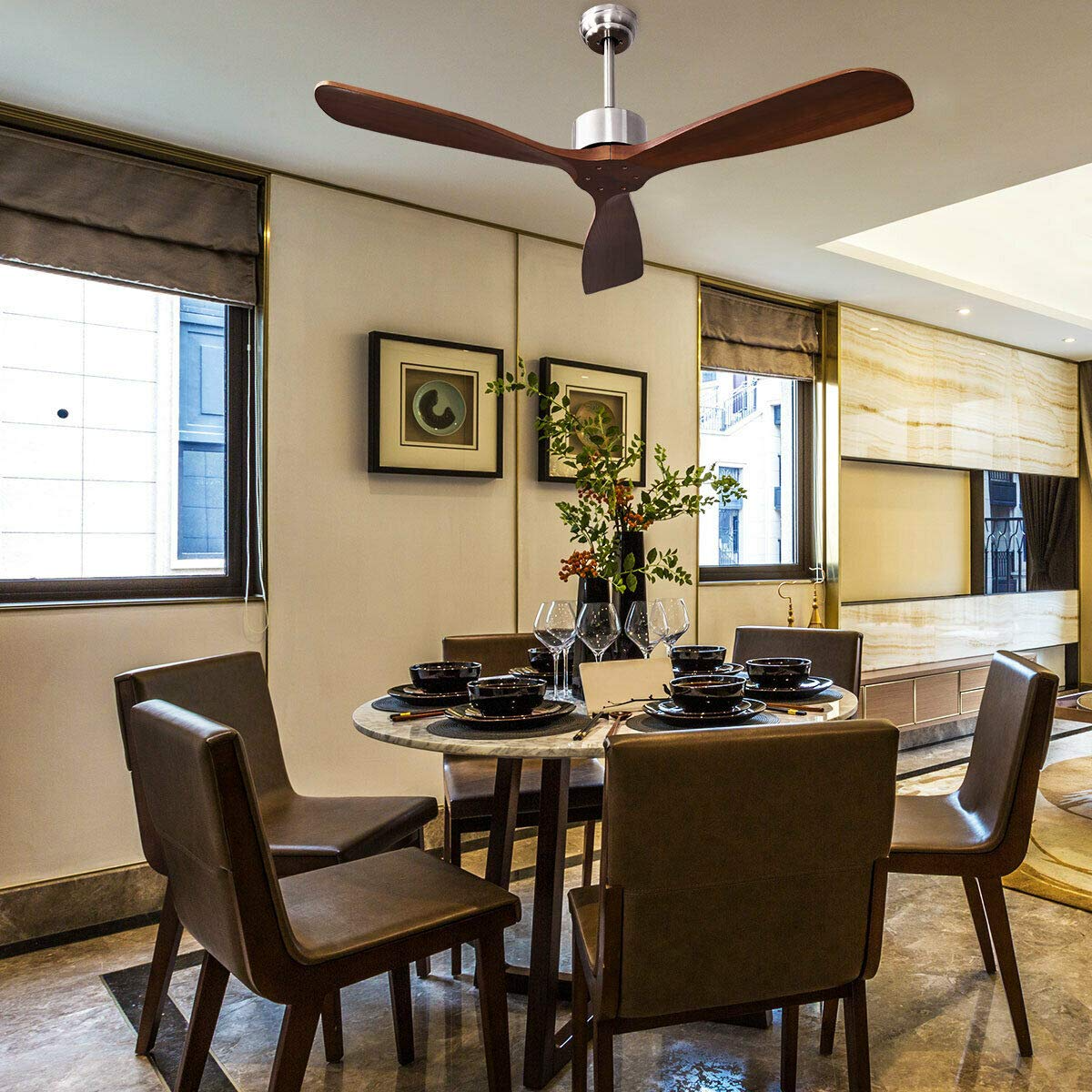As the weather is becoming smothering, you may need ceiling fans to refresh the air. When using a ventilating fan, you may encounter many problems. Today, Tangkula will help you solve these frequently asked questions for you!


-
Directions for ceiling fans for summer:
One of the essential roles of an air mover is to ventilate airflow, assisting air conditioners. The ceiling fan will help you make the most of it. Here is the reason:
During the summer months, it is recommended to set your ceiling fan to rotate counterclockwise (when looking up at the fan). This direction creates a breeze that promotes air movement in the room, resulting in a cooling effect. The counterclockwise rotation helps to create a downward airflow. And you will feel more comfortable as the evaporation of moisture is enhanced. - Directions for ceiling fans for winter:
In winter, you should change the direction of your Tangkula ceiling fan to rotate clockwise (when looking up at the fan). This reversal direction creates an updraft that helps to circulate warm air, trapped near the ceiling downward and throughout the room. By redistributing the warm air, you can improve heating efficiency and achieve a more balanced temperature in the room. - How to change ceiling fan direction?
To change the direction of a Tangkula ceiling fan, locate the fan's switch. Usually, it is on the fan housing or the fan's remote control.
Flip the switch to change the fan's direction from counterclockwise to clockwise or vice versa.
Ensure the fan is turned off before changing direction to prevent any accidents or injuries.
In most cases, the Tangkula ceiling fan is equipped with a remote control, by which you can change the air circulation direction in different seasons. - How to measure a ceiling fan size?
To measure the size of a Tangkula ceiling fan, determine the fan's blade span. Measure from the tip of one blade to the tip of the opposite blade. Alternatively, you can measure the distance from the center of the fan to the tip of one blade and double that measurement to obtain the diameter. Knowing the size of the fan will help you select the appropriate fan for your room and ensure proper airflow. - Is ceiling fans noise high?
Ceiling fans can generate some noise during operation. However, humming noise can vary depending on various factors such as the fan's quality, installation, and maintenance.
Higher-quality ceiling fans tend to be designed with quieter motors and better balance, resulting in lower noise levels. Regular maintenance, including cleaning the fan blades, tightening any loose parts, and lubricating the motor, can also help minimize noise. Tangkula fans are under ultra-quiet operation, which is the perfect choice for bedroom!

- How to balance ceiling fans?
If your Tangkula ceiling fan is wobbling or shaking, it may need to be balanced. To balance the fan, follow these steps:
1. Ensure the fan is turned off and has come to a complete stop.
2. Use a fan balancing kit, available at most hardware stores, or find similar weights, like coins or washers.
3. Attach the weight to the top of one of the fan blades.
4. Turn the fan on and observe if the wobbling has reduced. If not, try moving the weight to a different blade until the fan is balanced and operates smoothly. - How to remove a ceiling fan?
To remove a Tangkula ceiling fan, follow these general steps:
1. Turn off the power to the fan at the circuit breaker or fuse box to ensure safety.
2. Locate and remove any screws or fasteners that secure the fan to the ceiling or mounting bracket.
3. Disconnect the wiring connections between the fan and the ceiling. And ensure that you cap or tape the exposed wires to prevent electrical hazards.
4. Carefully lower the fan and remove it from the mounting bracket. It's better to have someone assist you in this process, especially when the fan is heavy. - Is the ceiling fan safe for a child?
Ceiling fans can pose safety risks to children if not used properly.
Make sure the following things:
1. Correctly install the fans
2. Securely mount them to the ceiling
3. Keep away from any objects that a child could reach.
The fan's pull chains or control switches should be positioned out of a child's reach to prevent accidental activation. Additionally, it is essential to tell children about the potential dangers of sticking their hands or objects into the fan while it's in operation. Supervision and caution are necessary to ensure your little one's safety. - How much electricity does a ceiling fan use?
The electricity consumption of a Tangkula ceiling fan can vary depending on the fan's size, speed settings, motor efficiency, etc.
Generally, ceiling fans are relatively energy-efficient compared to other cooling options. On average, a ceiling fan consumes between 10 to 100 watts of electricity per hour, depending on its settings. To be more specific, Tangkula 52” ceiling fan consumes 10 watts at a low speed and 71 watts at a high speed. By using ceiling fans strategically in combination with air conditioning, you can potentially save energy and reduce your overall cooling costs.

- How to change a light bulb in a ceiling fan with light?
To change a light bulb in a Tangkula ceiling fan, follow these general steps:
1. Before any maintenance, turn off the power to the fan at the circuit breaker or fuse box to ensure safety.
2. Locate the light bulb cover or housing on the fan. Depending on the model, the cover may be secured with screws, clips, or other fasteners.
3. Remove the cover by unscrewing the screws or releasing the clips. Some covers may simply twist off or have a snap-on design.
4. Replace the old light bulb with a new one of the same wattage and type, ensuring it is securely screwed or inserted into the socket.
5. Reattach the cover or housing, ensuring it is properly secured to the fan.
Note: The specific instructions for changing a light bulb may vary depending on the product. Therefore, please refer to the user manual or installation guide provided with your specific Tangkula ceiling fan for detailed instructions and safety guidelines.
Hope this article helps you know more about ceiling fans! If you have any questions after purchasing the Tangkula summer appliance, feel free to contact our customer service! We’ll reply to you ASAP! In the end, if you’re interested in what we share, remember to subscribe to our store via e-mail to get the latest news and discount!
The upcoming blog preview: Recommendation of Tangkula Ceiling Fan for Summer


